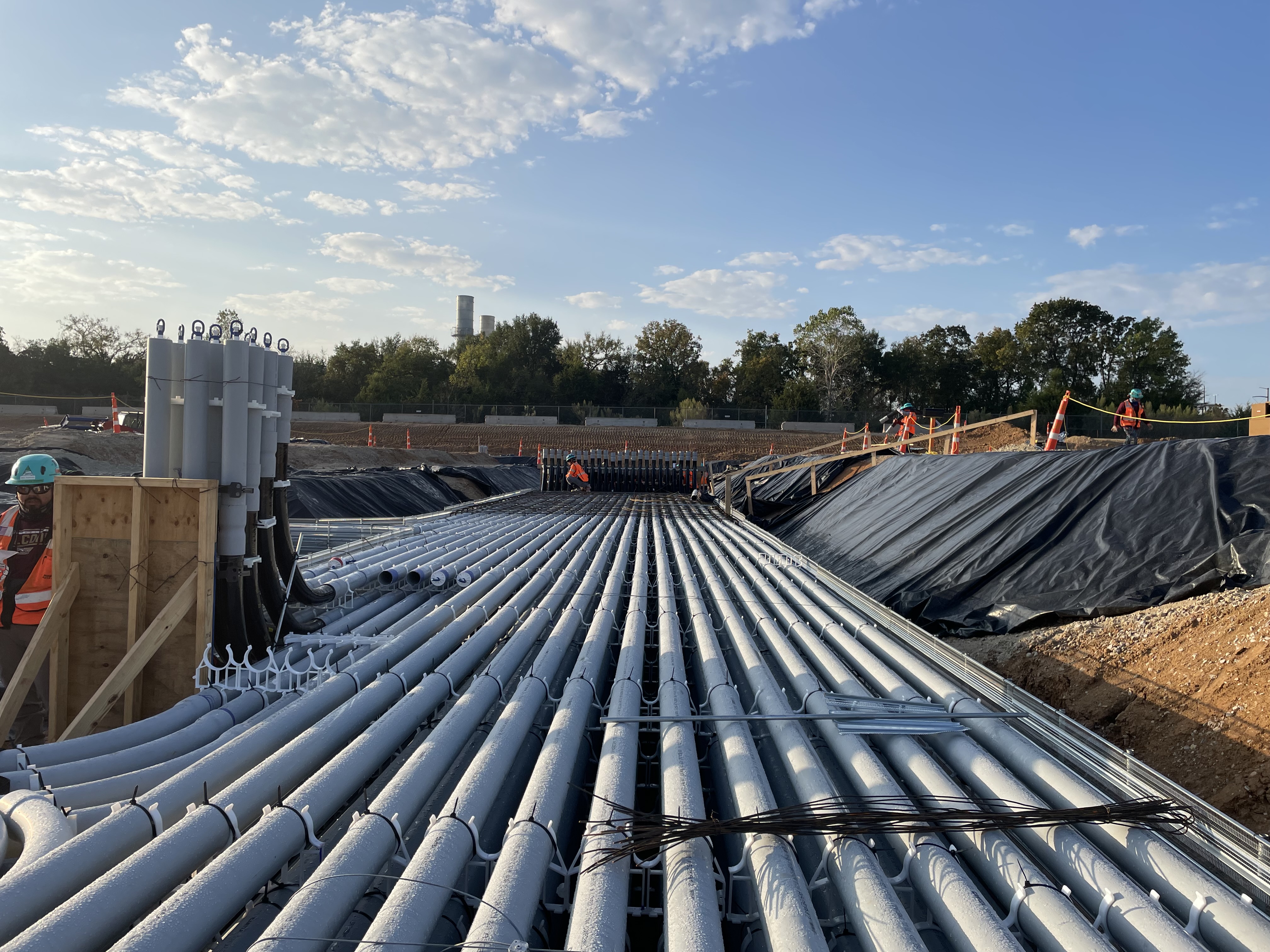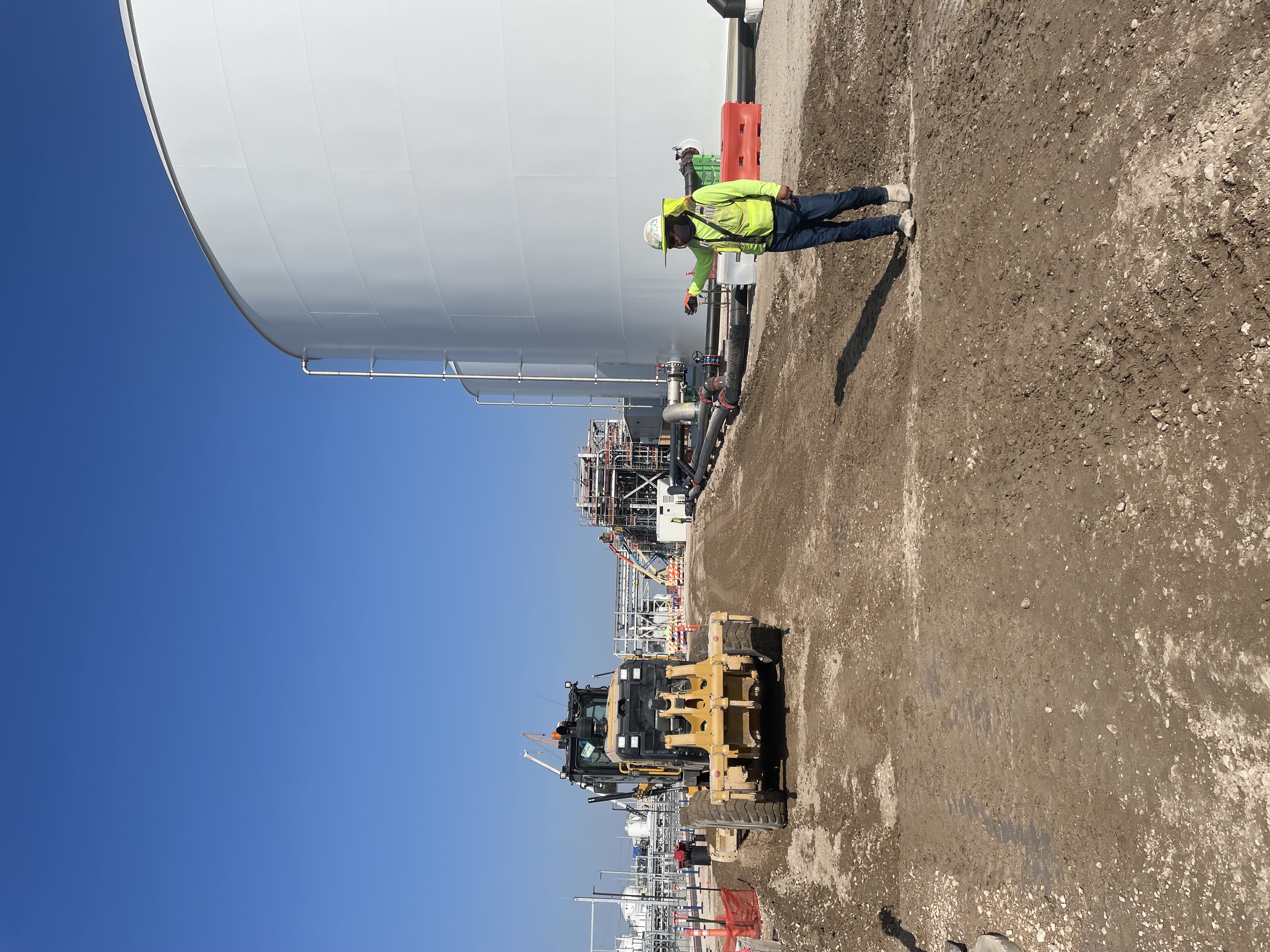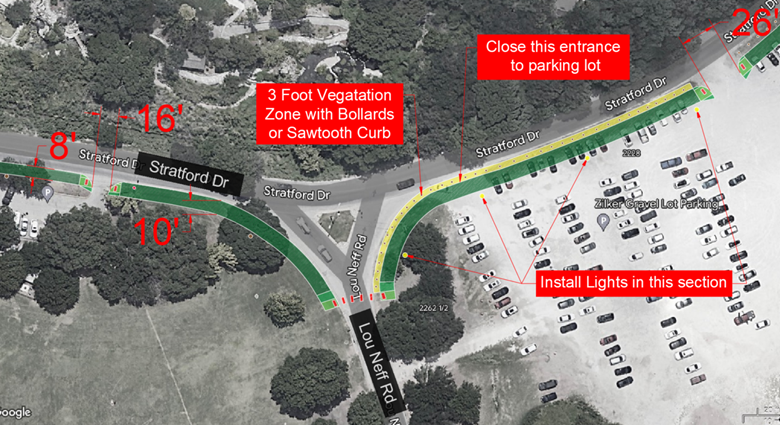Daniel Miller's Story
My life’s mission is to make meaningful contributions to society, whether through building critical infrastructure or creating innovative software that helps people work smarter. I’m dedicated to advancing our collective capabilities, inspiring others, and building systems that bring efficiency, prosperity, and happiness to the communities they serve. Here is why:
Growing up, I moved across the U.S. from one construction project to another. Soccer was my passion and main focus throughout high school. During those years, I developed a love for problem-solving, learning, and pushing my limits. Civil engineering caught my interest because it combined analytical thinking with the construction world I grew up around.
At sixteen, I graduated high school early and began attending the University of Texas at Austin (UT). In college, I played on the UT Men’s Club Soccer Team, eventually serving as Vice President and leading the team to a second-place finish at the National Championship.
At UT, I focused on designing civil engineering systems, building coding projects, and developing investment strategies. I also completed multiple internships in the construction industry, where I learned about construction management, infrastructure development, civil design, and effective communication on complex projects.
After college, I joined Kiewit Foundations Co. to work on a water treatment facility supporting Samsung’s semiconductor plant in Taylor, Texas. We drilled 3,967 24-inch ACIP piles, each 60–70 feet deep. As a Field Engineer, I managed materials, surveying, cost and quantity tracking, and quality control.
Following the ACIP Piles, I transitioned to a two-mile discharge pipeline project for the same facility. The pipeline consisted of 48-inch reinforced concrete pipe installed 20–28 feet below grade. As Lead Engineer and acting Foreman, I planned and tracked the work daily to ensure safe and efficient progress. I was later promoted to Lead Civil Field Engineer, where I scheduled, planned, and supported self-performed storm drain, conduit, and final grading operations while managing asphalt paving and concrete flatwork subcontractors.
Next, I joined the team at a Simple-Cycle Power Plant in Central Texas, where I advanced from Lead Field Engineer to Superintendent overseeing all self-performed civil and concrete operations—about $60 million in total scope. I led procurement of $8 million in materials, including precast concrete, rebar, anchor bolts, embedded items, and aggregates, and managed seven subcontractors performing $2.5 million in work. To improve project efficiency, I developed a three-week “flow map” scheduling tool that streamlined cross-discipline coordination and helped us deliver critical scopes two weeks ahead of schedule. I also implemented a procurement-tracking system that ensured on-time fabrication and delivery of more than 3,000 engineered embeds and 550 tons of rebar. I supervised three field engineers and a 30-person crew covering civil, concrete, and survey operations.
While at Kiewit, I also worked as a Software Engineer for Luxury Collective, a digital-marketing agency, where I built and deployed over ten fully custom web applications—including e-commerce platforms, landing pages, and CMS-based sites. I optimized backend systems using Node.js, Express.js, and MongoDB, reducing database load times by 30%. I created LinkedResume, a full-stack social platform for professional feedback and networking, capable of handling 100 requests per second with sub-200 ms response times. I also built Task AI, a Flask-based automation tool that executes repetitive computer tasks, cutting manual effort by up to 70% through AI-driven task automation.
After three years at Kiewit, in 2025 I moved to San Francisco, California to found Build Plan LLC, a startup developing AI-powered work-planning and procurement tools for contractors.
Education & Licensure
Born
Northern High School Graduated High School
University of Texas at Austin Bachelor of Science in Civil Engineering
Engineer-in-Training (EIT) Certification
Passed PE Civil Exam
Construction
TIC — Apprentice Electrician Calcasieu Pass LNG Export Facility (Cameron, LA)
Kiewit - Field Engineer Intern (Civil/Concrete) Jackstone Highway Interchange Project (Little Rock, AR)
Kiewit — Field Engineer (Deep Foundations) Blue Sky Water Reclamation Facility (Taylor, TX)
Kiewit - Lead Field Engineer / Foreman (Pipeline) Blue Sky Water Reclamation Facility (Taylor, TX)
Kiewit - Lead Field Engineer (Civil) Blue Sky Water Reclamation Facility (Taylor, TX)
Kiewit - Superintendent (Civil/Concrete/Survey) Freestone Simple-Cycle Power Plant (Fairfield, TX)
Software
Freelance Front-End Developer Luxury Collective (Digital Marketing)
Freelance Full-Stack Developer LinkedResume, Apollo Ski, Luxury Collective
Build Plan LLC Founder & CEO
My Projects

Linked Resume
Full-stack MERN stack Social Media platform for professional feedback and document sharing; 100 req/s with less than 200ms avg latency.
Daniel's Contributions
- Designed and Built UI/UX/Backend and System Design
- Built Auth, DB and deployment systems
- Designed REST APIs; sustained ~100 req/s, ~200ms avg response.
- Reduced file retrieval latency ~40% via S3 layout, caching, and CDN.
- Automated comms with AWS SES; 99.9% uptime across client (Vercel) + server (EC2).
- Structured asset pipeline with AWS S3; versioned uploads and signed access.




Details
Linked Resume is a full-stack, web-based social media platform designed for professionals to showcase their work, share documents, and receive feedback directly from peers and collaborators. Unlike traditional resume sites or static profiles, Linked Resume turns professional growth into a dynamic, interactive experience — allowing users to build meaningful connections through content and collaboration.
At its core, the platform enables users to upload and edit documents directly inside the application, giving others the ability to suggest improvements, comment inline, or contribute new ideas. This collaborative model bridges the gap between social networking and productivity tools, helping professionals co-create content and portfolios that evolve over time.
From a technical perspective, Linked Resume is built as a scalable MERN stack application deployed across cloud-native infrastructure:
- Frontend: React and Vite with optimized route-based code splitting, ensuring fast load times and smooth navigation.
- Backend: Node.js and Express, featuring RESTful APIs architected for modular growth and multi-tenant data isolation.
- Database: MongoDB with indexed query paths and pre-aggregated feed pipelines for low-latency user feeds.
- Storage & Email Services: AWS S3 for document and media storage, SES for transactional and onboarding emails.
- Deployment: Client hosted on Vercel and server on AWS EC2 with CloudFront CDN, delivering global availability and sub-200ms average response times.
The system supports secure file handling via pre-signed S3 URLs and real-time content collaboration through version-controlled document updates. Authentication and authorization are managed with JWT and role-based access control, ensuring privacy and security across user interactions.
Monitoring and analytics are implemented using AWS CloudWatch and Sentry, allowing real-time performance tracking, error visibility, and uptime reliability above 99.9%. The architecture is horizontally scalable — capable of handling thousands of concurrent requests while maintaining predictable performance under load.
Linked Resume represents a step toward the future of professional networking — a platform where users don’t just display their work, but actively build, refine, and share it with others.

Task AI
Python + Flask automation platform that watches user context and executes saved tasks; aims to cut repetitive work by ~70%.
Daniel's Contributions
- Designed task model + execution engine with queueing and audit logging.
- Implemented activity listener (pynput) + secure API with JWT.
- Built Flask admin UI for creating, testing, and scheduling tasks.
- Planned LLM assist for task generation and parameter inference.
- Set up MongoDB indexes for quick task lookup and history retrieval.



Details
Task AI centralizes repeatable actions into reusable “tasks” (clicks, keystrokes, app launch, form fill) that can be triggered by schedule, hotkey, or context. A Flask API manages task CRUD, secure execution, and telemetry.
The roadmap includes LLM-powered task drafting (few-shot prompts → runnable task graph) and confidence-gated execution. Data sits in MongoDB with role-based access and server-side validation.

ApolloSki.com
Custom MERN e-commerce with Stripe checkout and Shippo shipping; built for reliability and smooth conversions.
Daniel's Contributions
- Implemented Stripe Elements with webhooks (payment intents, refunds, receipts).
- Integrated Shippo for real-time rate shopping + label creation, cutting fulfillment time ~35%.
- Product catalog + inventory with MongoDB schemas and admin controls.
- Asset storage on S3; CDN caching for images and static assets.
- Hardened auth, order integrity checks, and replay protection.




Details
ApolloSki is designed for fast browse → checkout flow, with route-based code-splitting and cart persistence. Orders are validated server-side; shipping labels are created post-charge, and tracking is emailed automatically.
Back-office tools include product and inventory management, order search, and refund workflows. Deployment splits client (Vercel) and API (EC2) behind CloudFront for stable global performance.

ABD Calculator App
SwiftUI iOS app for foremen to calculate quantities, costs, and man-hours in the field — saving ~1 hr/day.
Daniel's Contributions
- Designed calculator flows for concrete, pipe, earthwork, and crew time.
- Design UI/UX in Figma before building out application in XCode
- Ran user testing with foremen; iterated for faster input and fewer taps.






Details
ABD Calculator is a mobile application built to speed up critical calculations and checks performed in the field.
The application allows survey crews to check there elevation calculations, civil crews to keep track of their CY, Haul times and unit rates.
The UI is tuned for glove-friendly tap targets and dark-friendly contrast.

NFT Website
Marketing site for a college-themed NFT collection; emphasis on crisp UI, fast load, and creator storytelling.
Daniel's Contributions
- Built responsive landing and gallery; optimized assets for quick TTI.
- Collaborated with the NFT team to refine content and calls-to-action.
- Set up lightweight animation and device-friendly typography system.



Details
CollegeDrpoouts was a website I built for an NFT project. Focus was on clear narrative, rarity highlights, and simple scroll-based reveals. Code kept lightweight for better Web Vitals.

Portfolio Website
Personal portfolio built from scratch to practice design systems, page transitions, and accessible components.
Daniel's Contributions
- Built a consistent B&W design language with motion micro-interactions.
- Implemented section-based routing with smooth scroll and focus traps.
- Optimized assets and lazy-loading for speedy first impression.


Details
Daniel's Portfolio website was a built from scratch Vanilla JS, html, css project that doubles as a playground for experimenting with accessibility and navigation patterns in a minimal aesthetic.

TND Investing Website
Lightweight site created with Zyro + custom HTML/CSS/JS; integrated Stripe for simple POS and payments.
Daniel's Contributions
- Added custom sections and scripts on top of the site builder.
- Implemented Stripe checkout and tested payment flows.
- Optimized imagery and layout for mobile conversions.


Details
Goal was pragmatic speed to market with just enough customization to support brand and transactions.

Cast in Place Foundations
Lead Field Engineer for cast-in-place foundations on a simple-cycle power plant, managing critical anchor-bolt tolerances and fast-track pours.
Daniel's Contributions
- Planned, scheduled, and coordinated form–pour–strip operations across multiple crews.
- Procured rebar, anchor bolts, and formwork; managed rebar subcontractor performance and QA/QC.
- Implemented bolt-pattern verification and survey hold-points to meet turbine tolerances.
- Built quantity tracking and cost forecasting tools for pour cadence and material usage.



Details
Work included turbine foundations, equipment pads, and ancillary structures. I synchronized survey, rebar, embeds, and pour breaks so critical path work could proceed without rework. Pre-pour checklists and bolt-template controls reduced punch items while keeping production moving.

Underground Electrical Duct bank
Led planning and delivery of underground electrical duct bank across the plant, coordinating with civil, mechanical, and electrical interfaces.
Daniel's Contributions
- Sequenced out all underground duct bank between civil, concrete and electrical.
- Procured Stayform, rebar and formwork materials for duct bank.
- Managed survey for ductbank, implimented quality control program that led to 0 rework on ductbank
- Tracked quantities, productivity and cost for ductbank operations





Details
On a simple cycle power plant I was involved in the UG ductbank operation and managed all sides from survey, quality, procurement, civil/concrete crews, cost, quantities, etc.

Stone Columns
Planned and coordinated vibro stone column installation for ground improvement on the power plant site.
Daniel's Contributions
- Coordinated with specialty subcontractor (Keller) and survey on grid layout and tolerances.
- Sequenced areas to unlock follow-on foundations with minimal remobilization.
- Tracked production, verification tests, and material deliveries.

Details
Established daily test/production rhythm with pre-shift survey and QC hold points, improving hit-rate and reducing re-stakes.

Asphalt Paving, Finish Grading, Roadway Lighting
Led civil finish package—grading, flex base, asphalt, and lighting—for a large water reclamation facility.
Daniel's Contributions
- Built three-week lookahead maps tying civil, electrical, and delivery windows.
- Managed RDC Paving subcontract; coordinated QC test freq and paving windows.
- Closed grade checks via survey loops before paving windows to reduce rework.
- Tools: Excel, SharePoint, InEight, Propellr







Details
Established production lanes with survey control checkpoints, enabling continuous paving while maintaining access for ongoing plant work.

Civil Utilities
Planned and then field-led installation of deep RCP discharge pipeline with complex shoring and dirt management.
Daniel's Contributions
- Produced ITP, excavation/shoring plans, and haul/stockpile strategy for wet weather.
- Ramped two headings; transitioned into foreman role to drive field production (~72 LF/day).
- Coordinated manhole/structure ties, line and grade checks, and compaction testing.




Details
We standardized trench boxes and bench widths to match equipment fleet, cutting cycle time. Daily line/grade verifications reduced correction work at structures.

Discharge Pipeline
Deep RCP discharge line with structures and headwall; dual headings to achieve schedule in variable soils.
Daniel's Contributions
- Built day-by-day sequence with crew, crane, and truck allocations for parallel headings.
- Coordinated inspections, mandrel/pressure testing readiness, and restoration windows.
- Managed wet weather plans and contingency stockpiles to keep headings active.





Details
Focused on consistent stake-in to stake-out loops and pipe-zone compaction to hit test milestones cleanly and keep restoration aligned with adjacent work fronts.

ACIP Piles
Field Engineer on deep foundations package: 3,967 ACIP piles (60–80 ft), peaking at five rigs across the site.
Daniel's Contributions
- Coordinated grout orders/invoicing and rebar cage logistics; tracked crew performance vs. plan.
- Managed layout and as-built survey; verified tip elevation and grout take.
- Standardized shift reports and QC logs, reducing reconciliation time.
- Supported spoils handling with SEBHSA pumps, CAT 315, loader/skid fleet.




Details
Implemented daily production dashboards and pre-shift checklists with rig-specific KPIs, improving predictability of grout deliveries and cage logistics.

Stone Columns
Led a small crew during internship to install ~1,000 stone columns supporting a future bridge abutment.
Daniel's Contributions
- Sequenced drilling and backfill; maintained daily production and QC logs.
- Coordinated equipment service windows to minimize downtime.
- Verified grid layout and on-the-fly adjustments with survey.


Details
Balanced production rate with material delivery and compaction hold points to meet density targets while keeping the crew fully utilized.

Design: Buildings Beam and Columns
Designed RC beams and columns for a six-story building as part of Reinforced Concrete Design coursework.
Daniel's Contributions
- Computed factored loads and designed members per ACI provisions.
- Checked shear, deflection, and serviceability; prepared details and schedules.
- Compiled calculation report and design assumptions.




Details
Work emphasized clear calc flow, conservative assumptions where data was incomplete, and detailing that simplifies constructability.

Design: Zilker Park Shared Use Path
Capstone project proposing a shared-use path alignment through Austin’s Zilker Park with safety, ADA, and grading considerations.
Daniel's Contributions
- Led path alignment modeling and grade analysis; verified ADA slopes and crossfalls.
- Collected site measurements and produced exhibits for stakeholders.
- Balanced cut/fill and minimized environmental and user conflicts.





Details
We iterated alignments to separate pedestrian and cyclist flows near conflict points, prioritizing clear sight lines and maintenance access.

Design: Reverse Engineering a Can Opener
Disassembled and modeled a can opener in Autodesk Inventor; evaluated component stresses and proposed a durability improvement.
Daniel's Contributions
- Modeled assemblies and constraints; ran stress checks on key components.
- Identified plastic bearing as a weak point under expected loads.
- Recommended stainless bearing upgrade to align with load path and service life.





Details
Documented failure mode and proposed a material change with minimal cost and assembly impact, improving reliability under peak torque.
